Climbing Mount Everest Dead Bodies
How many bodies are dead on Mount Everest? Mount Everest has become famous for its striking beauty and challenging climbing. There are dark sides to the exposure to this incredible area of the world.
Over 300 climbers have died on its slopes, and many bodies are buried there. Some of these bodies are literally under the nose of some climbers as chilling representations of the mountain’s dangers. Due to severe conditions, it is extremely hard to get these bodies. The “death zone” above 8,000 meters is the term for the region where the air is extremely thin, and conditions are rapidly changing.
Sometimes, a recovery of a deceased body is required, and this can only be done by a qualified team. Some mountaineers tragically lost their lives in an attempt to rescue other mountaineers.
Recently, climate change has made things worse. As the ice melts, more bodies are being exposed. A group recovered multiple bodies from the mountain during a 2024 cleanup operation.
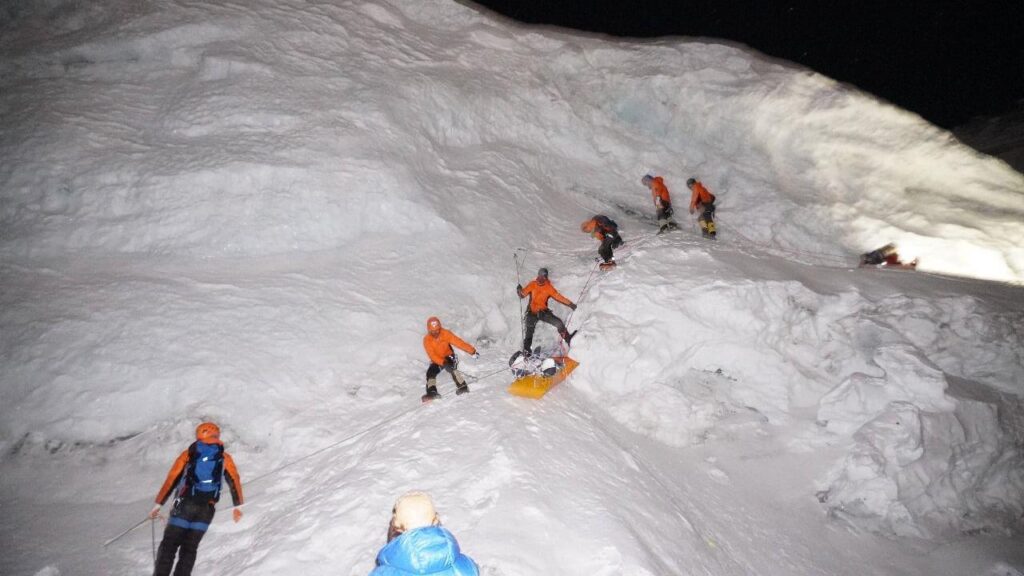
The bodies are currently in Kathmandu, awaiting identification. These works emphasize the dignity and care that are due in this hallowed spot where so many have striven for their dreams, and so many lost them.
Mount Everest Dead Bodies Landmarks
Many people ask how many dead bodies have been left on Mount Everest. Mount Everest is well known for the fact that it contains a huge number of dead bodies on its flanks.
Over 340 patients, by climbing the mountain, can have died the same way since successfully climbing it in 1953, and nearly 200 patients to date by climbing the mountain. Many of these bodies have become landmarks for climbers.
For instance, “Green Boots” is purportedly a body of Tsewang Paljor and is a known body that was discovered near a cave on the path leading to the summit. Climbers used to walk past Green Boots as a way to know their progress.
Other notable bodies include “Sleeping Beauty,” which was located on the southeast ridge, and “The German,” found on the north face route.
The area known as Rainbow Valley is particularly significant. It is located underneath the Everest snowline and is named after the multicoloured down jackets of deceased climbers that lay on the ground.
Climate change as the result of recent melting ice has revealed more bodies and heightened awareness of the disturbing fact. Cleaning up Everest is being undertaken, such that part of the bodies and waste left behind by climbers have been retrieved.
Mount Everest Dead Bodies Sliding
On May 21, 2024, a lethal avalanche collapse of an ice cornice took place on Mount Everest, resulting in the death of 2 climbers falling down.
Eyewitnesses described a scene of the people walking across a narrow section of the road as the snow ridge separated suddenly. The catastrophe caused a panic stampede as mountaineers “pulled tight” by accident on the safety rope around a fixed point.
Alas, two cliffers were dislodged and carried off the edge of the chasm and are gone. This event illustrates the absolute danger of mountaineering on Everest, where the physical, i.e., collapsing snow, hazardous conditions lead to fatal, fatal accidents.
Experts pointed out that such events could be on the rise because of climate change, which is changing the mountain’s state.
Top Of Mount Everest Dead Bodies
How many dead bodies are on top of Mount Everest? Mount Everest is the summit of the world and, at the same time, a graveyard for many climbers. About 340 have died along its slopes, and 200 are still under the whole mountain. A few of these bodies are visible to climbers and have served as landmarks.
E.g., “Green Boots” is an iconic visible body from the summit walk, while “Sleeping Beauty” might be seen in the climbing paths. The extremely demanding conditions also make it very difficult to retrieve these bodies since, often, they are embedded in ice and snow.
Even venturing into the “death zone,” i.e., altitude of 8,000 m and above, is a dangerous endeavor in itself with the potential for altitude sickness and inclement weather conditions, making the exercise of disaster relief activities extremely risky.
Does Mount Everest Use Dead Bodies As Markers?
Several bodies have gained notoriety as markers on Everest. Green Boots, claimed to be Tsewang Paljor, was left by the path of the climbers’ movements, leading them to a crossing they had to make to approach the summit.
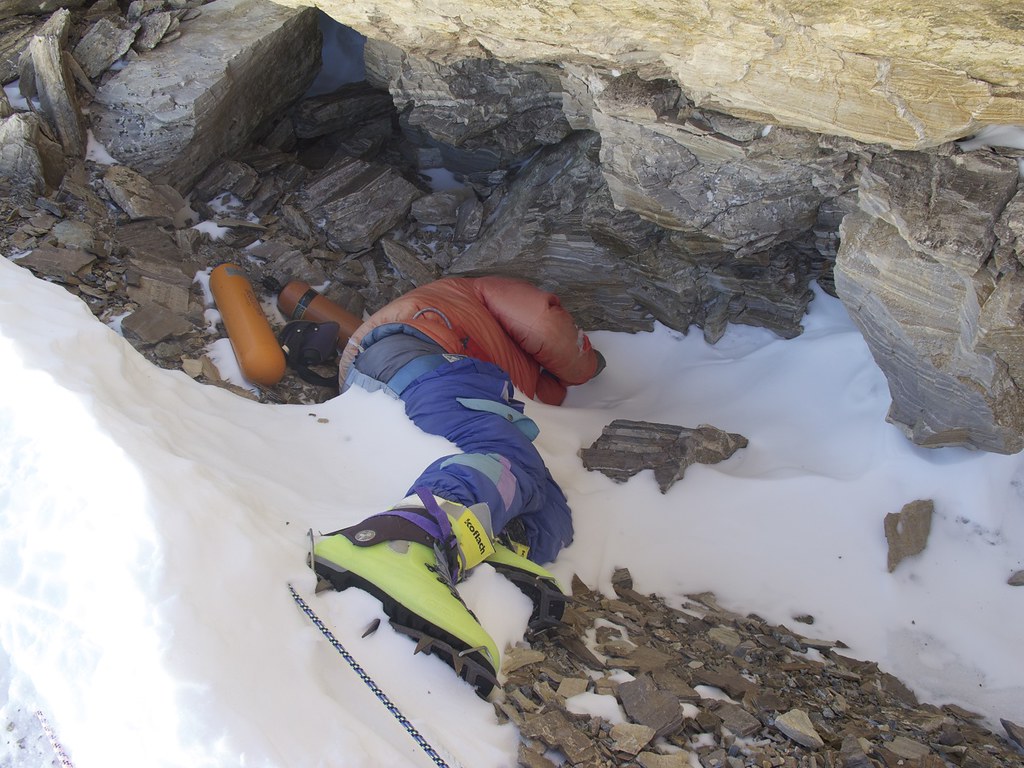
His figure was a station for mountaineers and was moved in 2014 on behalf of his family. Additional significant landmarks are Sleeping Beauty, on the southeast ridge, and Saluting Man, in the vicinity of the south summit. The Icefall Body is one of the few areas with practical public access at the Khumbu Glacier area.
But these are also reminders of dangers involved in the climbing of Everest, places of interest on the route, and how far along the distance of the climb the climber is relative to the summit.
Are There Still Dead Bodies On Mount Everest?
Yes, there are still dead bodies on Mount Everest. How Many Dead Bodies At Mount Everest? According to the year 2024 estimates, there are about but a few hundred to 300 bodies estimated to remain on the mountain.
A large number of these entities are in the “death zone”, i.e., at altitudes above 8,000 m, where the air is severe and survival is out of the question. Due to the challenging environments, it is almost impossible to retrieve most deceased bodies, where such efforts may be hazardous and expensive.
It can take hours to get a body, and hundreds or thousands of acres need to be navigated by a highly skilled team in hostile environments and very harsh weather.
Melting ice and snow uncovers an unprecedented number of bodies. In 2024, a team from the Nepali army successfully recovered five bodies, highlighting the ongoing efforts to address this issue.
The possibility that these bodies can be encountered has motivated debate on the psychological influence that climbers may experience in encountering them on their ascents.
Are There Really Dead Bodies On Mount Everest?
Is Mount Everest really covered in dead bodies? Yes, there are indeed dead bodies on Mount Everest. As of the time of this writing, more than 300 individuals have perished during their successive ascents to the top, and many of their remains are unretrievable because of the difficulties of recovery due to the formidable conditions around the summit.
These entities have also tragically become iconographic landmarks on the most visited climbs. Eg “Green Boots” are one of the iconic body Northeast Ridge, serving as a landmark for climbers.
Why are there so many bodies on Mount Everest?
When climbing Mount Everest, do you see dead bodies? Mount Everest is widely famous for high numbers of climber deaths during ascent attempts, where over 340 mountaineers have died since the first successful summit in 1953.
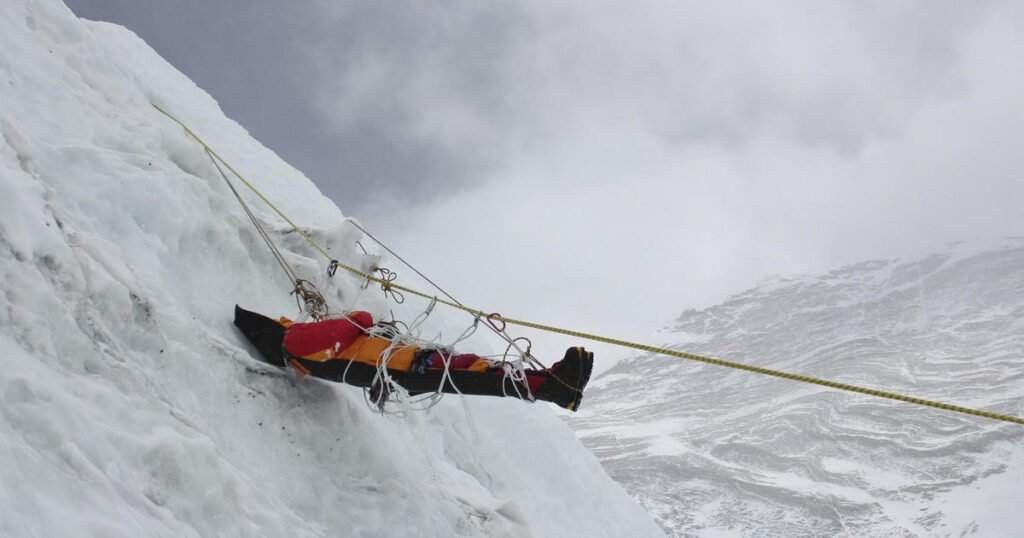
Possible death causes include acute mountain sickness, falls and avalanches, and severe fatigue, all of which are associated with the extreme experience in the “death zone” below which the atmospheric oxygen content is extremely low.
The intense cold and extreme weather, in turn, adds further complexity to the task of rescue work, and it becomes a matter of practicality to even recover significant numbers of bodies. Therefore, much of the population remains with a death cult mentality, waiting to mourn the dangers associated with the challenging and risky act of being caught in the mess.
Francys Sleeping Beauty Mount Everest Dead Bodies
Francys Arsentiev, “Sleeping Beauty”, died suddenly during a descent from Mount Everest in 1998. She was lying in a peaceful manner, which climbers dubbed “Sleeping Beauty”, as it seemed to them as if she was just sleeping. Francys and her husband, Sergei, faced severe weather conditions during their ascent, leading to their separation.
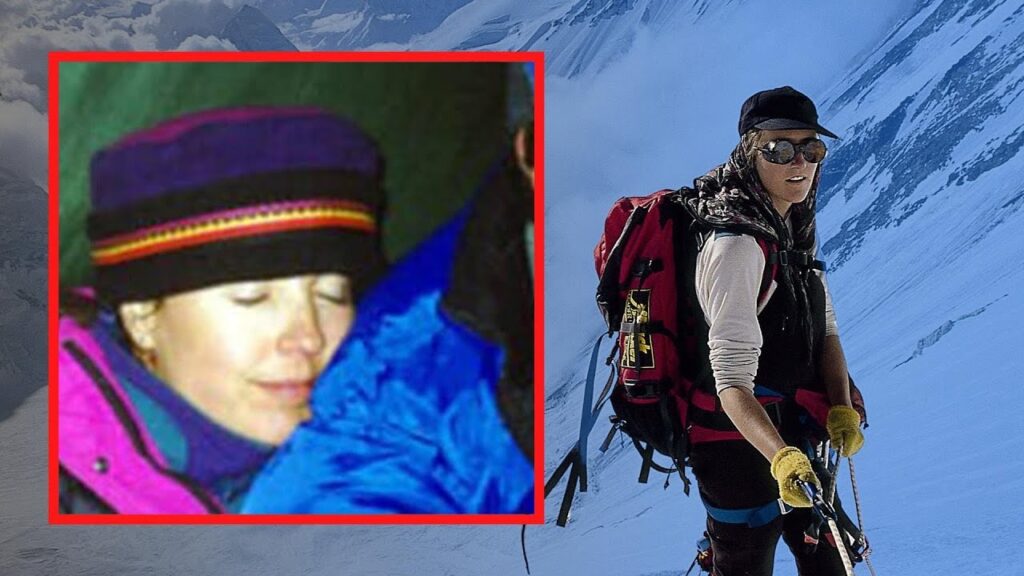
Although Sergei tried to recover her, Francys died as a consequence of the freezing cold. Her decaying trunk remained on the mountainside for nearly nine years longer than climbers found in 2007.
It is a starkly poor experience to encounter her mummified body today as a record of the dangers there are for existence in extreme-altitude climbing and the risks that climbers face as they try to achieve their ultimate ambition.
Death Zone Sleeping Beauty Mount Everest Dead Bodies
The “Death Zone” on Mount Everest, above 8,000 m (26,247 ft) altitude, has become a notorious hazard. Surprisingly, as a result of oxygen deficiency and freezing temperatures in this area, survival is, in fact, virtually impossible. In this dangerous field where numerous climbers have died in recent years, the body of Frances Arsentiev was found.
Her remains are a haunting warning of the risks lurking for anyone seeking to ascend Everest. People who could go under her on the way down, many of the time, do have a feeling of unease and do have lessons on the risk involved on the way up. The Death Zone has killed many and is an otherworldly reminder that the mountain is a merciless killer.
Rainbow Valley Sleeping Beauty Mount Everest Dead Bodies
Rainbow Valley is a very well-known point on the path to Everest where climbing paraphernalia and clothing left behind by climbers who died shine permanently in the sun. This spot is situated near where Francys Arsentiev’s body was discovered, thus reaching notoriety.
Francys’s story has a deep and intimate connection with the legend of Rainbow Valley, at the same time as the enchantment and danger of the summit of Everest. Her remains were finally relocated from the central exposure to a less prominent site in 2007″, but her presence still produces highly emotional effects in climbers who come to this site in the course of their ascent.
Dead Bodies Are Left Behind On Mount Everest
Mount Everest is commonly referred to as the largest fresh-air cemetery in the world, responsible for more than 300 climber deaths since 1953 (the first successful ascents of the mountain). A significant part of the entities are still in the upper part of the mountain due to the overall difficult conditions and the strategic difficulties for recovery operations.
Due to the extreme environments, particularly the “death zone” at more than 8000 m altitude, recovery of the body is almost impossible because climbers suffer from acute altitude sickness, adverse weather and unforgiving ground.
How many bodies of people who died on Mount Everest have been recovered?
Some of them has been recovered from Mount Everest to date up to 2024. Since then, through the collaborative efforts made by the Nepali Army for the cleanup, five retrieved corpses along with skeleton have been recovered during 2024 mission year.
However, the approximations reveal that 200 bodies remain on the mountain surface, a substantial proportion of which are covered by snow or ice.
Recovery is extremely demanding and can consume hours, often with specialized teams needed to manage the extreme environments. These procedures can be up to $80,000 per body, making them not only expensive but also risky.
Mount Everest Traffic Jam Dead Bodies
Due to some factors, traffic jam of Mount Everest has become a routine phenomenon and often occurs during the local climbing season. These traffic jams can have disastrous consequences including death.
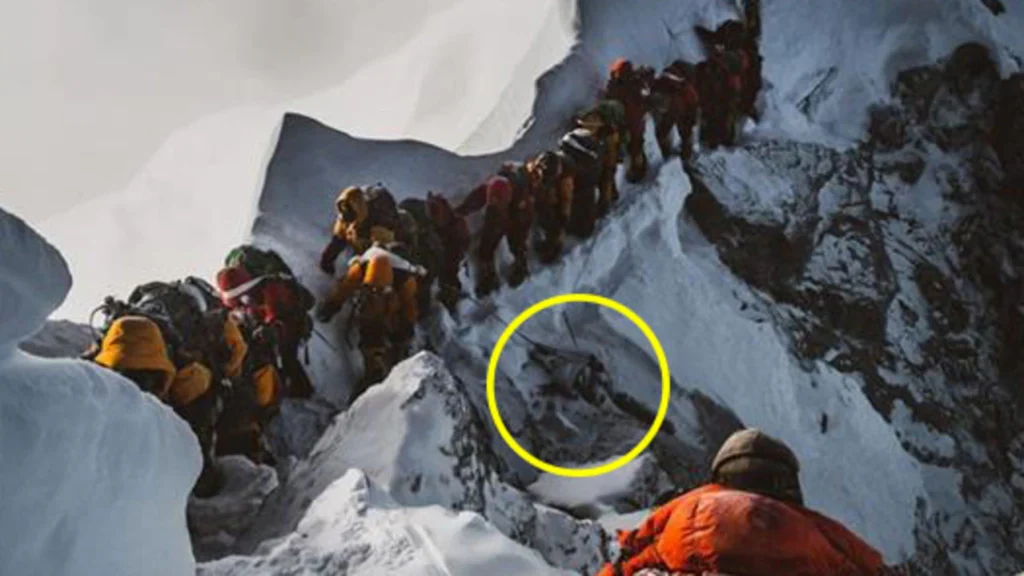
One notorious traffic jam happened in 2019 near the summit, where climbers were waiting in queue for hours under difficult conditions. Trapped within this scenario, both physiological and psychological extremes can result in fatigue, with the possibility of developing altitude sickness also rising.
In these bottlenecks, people on the trail could be confronted with the body of someone who has died of exposure or heat exposure and dehydration as a source of psychological trauma to the other hikers still on the climb reaching the summit. Indeed, that photograph of the bodies littering the ground in the rubble is, frankly, damning-a byword of the hazards inherent to thru-hike mountaineering.
Mount Everest’s First Dead Body
The first recorded death on Mount Everest resulted from an expedition in 1922 when meteorological conditions proved fatal for British climber George Mallory and his party. But the bodies began to be uncovered only in later travels on the mountain.
Mallory’s body, found in 1999 at altitude, was one of the more ancient bodies discovered. Once removed from the mountainside, his decomposition generated considerable curiosity over whether or not he reached the top prior to his demise.
What Happens to the Dead Bodies on Mount Everest?
In the lower altitude of Mount Everest, the fates of dead bodies are largely dependent on the extreme nature of the environment. More than 300 fatalities since 1953, when someone climbed for the first time in history 1953 deposits have scattered the remains of dozens of climbers on the mountain, mostly above 8,000 m, the “death zone.
These vehicles are frequently left lying there as a result of the dangerous conditions surrounding recovery operations, which are further complicated by bad weather, difficult terrain and low oxygen levels. Data can be characterized, both as fixed dead and restrictive to which options for extraction are possible, as well as being potentially hazardous and thus demanding large amounts of resources and time for whatever reason.
Ongoing climate change has also exacerbated the problem by deglaciation and snowmelt, whereby previously hidden and buried sites of human remains were then revealed. The Nepali Army in 2024 recovered multiple bodies as part of a cleanup effort that included both safety and environmental considerations.
Mount Everest Dead Bodies Documentary
A number of documentaries explore the issue of cadavers on Mount Everest and reveal the narratives of the avalanche victims as they tried to conquer the top of the world’s highest peak.
One notable documentary is “Death Zone: Cleaning Mount Everest” (2018), which follows a team of elite Nepali climbers as they venture into the treacherous Death Zone to recover bodies and clean up the mountain.
The documentary “Dark Side of Everest” explores the degradation found at some extreme climbing conditions, including bringing personal accounts and accounts of climbers killed on the mountain. Specific to notorious examples, such as Bruce Herrod, who came close to death in an extremely favourable environment, the text highlights Everest’s capriciousness.
Why Do Dead Bodies Get Left on Mount Everest?
Depictions of dead bodies on Mount Everest are mainly caused by the very ruggedness and difficult logistics of the rescue work. Beyond 8,000 m, an area is referred to as the “death zone” and represents significant risks such as low air to breathe, extreme weather conditions at high altitudes, and terrain.
Due to these reasons, acquisition of bodies is very dangerous. Not only are they hazardous, but also recovery missions are very expensive (up to $70,000/mission running cost). Given that climbers and their relatives would be unlikely to risk their lives for the purpose of bodily return, even if such a return is few and far between, going to such lengths and paying such a price may not necessarily be justifiable.
Furthermore, certain bodies are perfected in the rock and, thus, inaccessible by vehicular means. In this way, many deaths get left behind in the crags as silent memorials to the hazards of climbing and, occasionally, as the landmarks that lead climbers to dangerous sections of climb ahead.
Why Don’t They Remove Bodies from Mount Everest?
The disposal of the dead on Mount Everest is a multifaceted problem. For example, recovery is severely hampered by the high-altitude environment.
Physically pushing an already frozen carcass all the way to those heights presents a real challenge because the pressure could be too much; the body would need to be over 300 lbs (136 kg) at the cold end of the travel from defrosted to defrosted.
In addition, a stochastic climate may render a return operation into a suicide mission for the rescuers. There have been cases of death occurring as an individual attempts to rescue another individual from a mountain.
Because of this challenge, quite a few climbers avoid recovering in the expectation that even the chance that they significantly put their own lives at risk could lead to the collapse of the recovery process.
Therefore, the traditional protocol has changed to the point of abandoning the deceased on Everest, from where they are enduring markers of the ever-present risks of mountaineering at altitude.
Send an Enquiry
Error: Contact form not found.
© 2025 - Himalayan Trekking and Tours (P) Ltd. All Rights Reserved.

